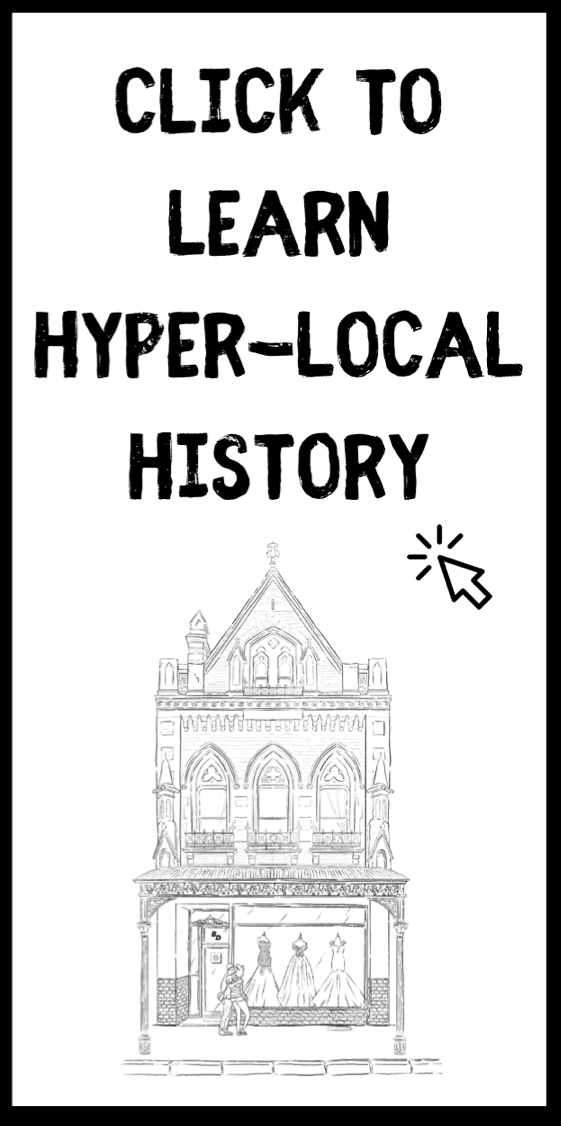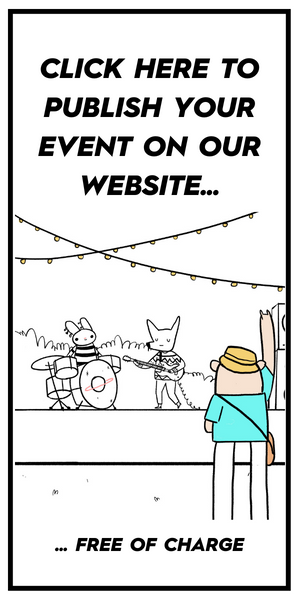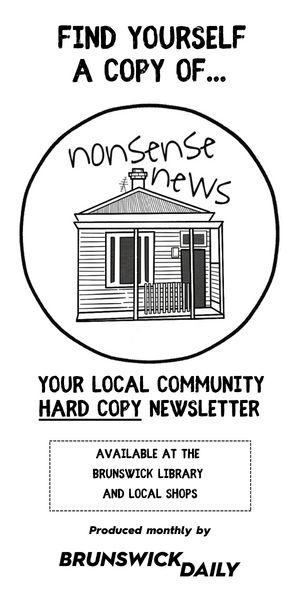“The thing with Brunswick is there is no natural centre,” Elisabeth Jackson tells me. Elisabeth, a Brunswick local, has served as a Councillor for the Brunswick City Council, from 1979-1985 and 1988-1994 including as Mayor in 1990-91. She has also worked in public libraries since 1985, and up until July 2021 worked at the Moreland Libraries. She is now the President of the Brunswick Community History Group.
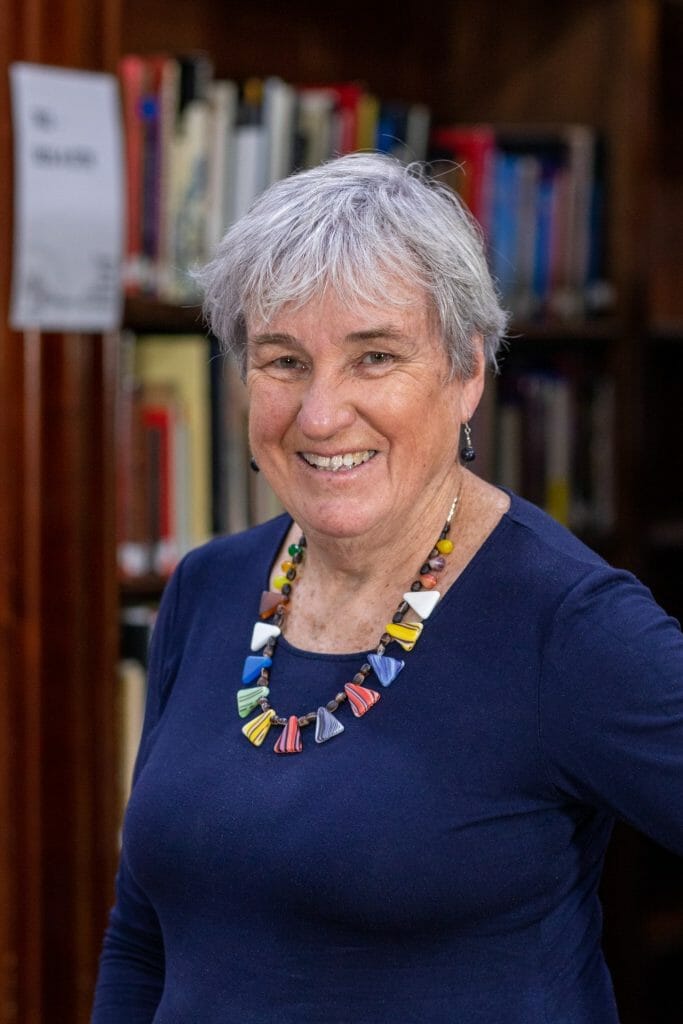
Elisabeth Jackson, Brunswick local, councillor, mayor, librarian and historian.
Source: Nico Keenan for the Royal Historical Society Victoria
The lack of centre is an artifact of European settlement which began in the 1830s. As with the entirety of Moreland City, the library is located on the unceded territory of the Wurundjeri Woiwurrung people. Robert Hoddle (whose name and work have shaped modern-day Melbourne; the Hoddle Grid in the CBD is named after him), surveyed and demarcated the boundaries of Brunswick. Brunswick would run in an east-west direction between Moonee Ponds Creek and Merri Creek, and north-south direction from Moreland Road and Park Street, respectively. To service the agricultural properties within these boundaries a narrow road was surveyed down the centre – what we now know as Sydney Road.
The first iteration of the library was provided by The Brunswick Mechanics’ Institute in 1868 (still located at the corner of Glenlyon and Sydney Roads). Mechanics’ Institutes were a mechanism used within Britain and across its colonies for setting up community facilities and amenities. The Brunswick Mechanics’ Institute initially provided library books for a fee, until 1926, when a free service for residents began. Eventually, in 1976, the library moved to the Brunswick Town Hall building. The building consisted of: McIver’s Hall (the smaller space) which faced Sydney Road; and Concert Hall (the larger space) which faced Dawson Street. The library occupied McIver’s Hall and almost immediately the space was too small for the library’s needs.
The Concert Hall had once been a social focal point for the community during the 1920’s-50’s with weekly dances. Elisabeth (and the history of the Town Hall building within the library) notes that “half of Brunswick residents met their partners at these dances.” However, by the late sixties with new forms of entertainment like television, these dances had become less common. In the seventies and early eighties, Concert Hall was mainly used for bingo nights and school concerts, and only at capacity once or twice a year. The National Trust of Australia heritage-listed the Brunswick Town Hall building in 1986.
In the early eighties, to address the numerous accommodation challenges of a growing suburb, including Brunswick Library outgrowing McIver’s Hall, the Council hired a firm of architects to evaluate feasible alternatives for space. Consideration was given to demolishing the Town Hall building and erecting a purpose-built library. However, following the heritage listing of the building, it was instead decided to convert the underutilised Concert Hall into the library. Consequently, McIver Hall was restored as a smaller Town Hall. On 10th December 1992, the opening of the newly located, Brunswick Library was celebrated with the unveiling of the mural “Phoenix” launched by Elisabeth herself and Geoff Hogg, the mural’s artist.

Geoff Hogg’s mural “Phoenix” in the Brunswick Library “does not depict scenes but rather it approaches the subject through stories and associations” Source: Brunswick Daily
In her many years of service to Brunswick, I ask Elisabeth about the changes she has encountered in the local library. She recounts when she first started working in libraries, backroom tasks such as cataloguing (now centralised by the National Library) and the purchasing of books (now outsourced) were a large part of the job. Instead, she notes, “the job is more people focussed”; job readiness training, computer training, assisting the new (conversational English); young (story time; literacy programs); and the older (book clubs, delivery of books) residents of Brunswick. During the pandemic, the library continued its service to the community, with online events, its online catalogue of books and movies, and an expansion of the book delivery service during the first lockdown, which eventually transitioned to a click and collect service in subsequent lockdowns.
This year the Phoenix mural and the library will mark 30 years in its Dawson Street location. I ask Elisabeth if it now feels like the library has formed a centre for Brunswick. “Yeah, I guess that focal point. We’ve got the baths, now, they’ve been renovated. We’ve got the library here. And we have events, like the music festival, which is, you know, based around this area including the Mechanics Institute. As well as Siteworks, which has the Blak Dot Gallery, showcasing First Nations artwork. So, it has become quite a focal point.”
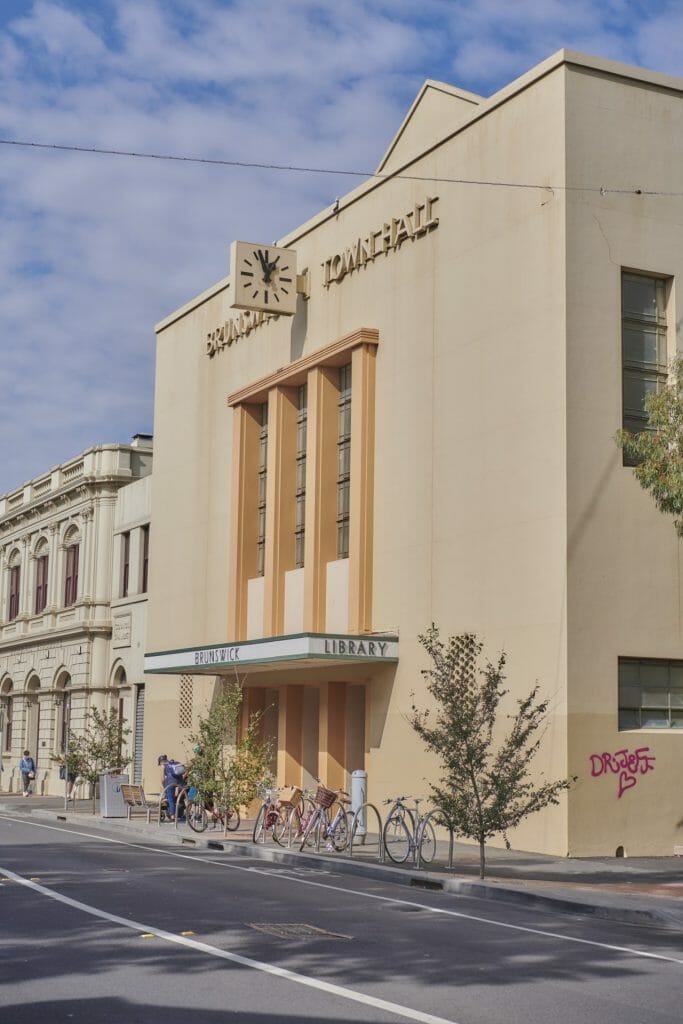
Dawson Street Entrance of the Brunswick Library which is housed in the Brunswick Town Hall. Source: Brunswick Library.
Both the Brunswick Library and the Brunswick Community History Group will continue to connect us with services, events and community programs in 2022.


